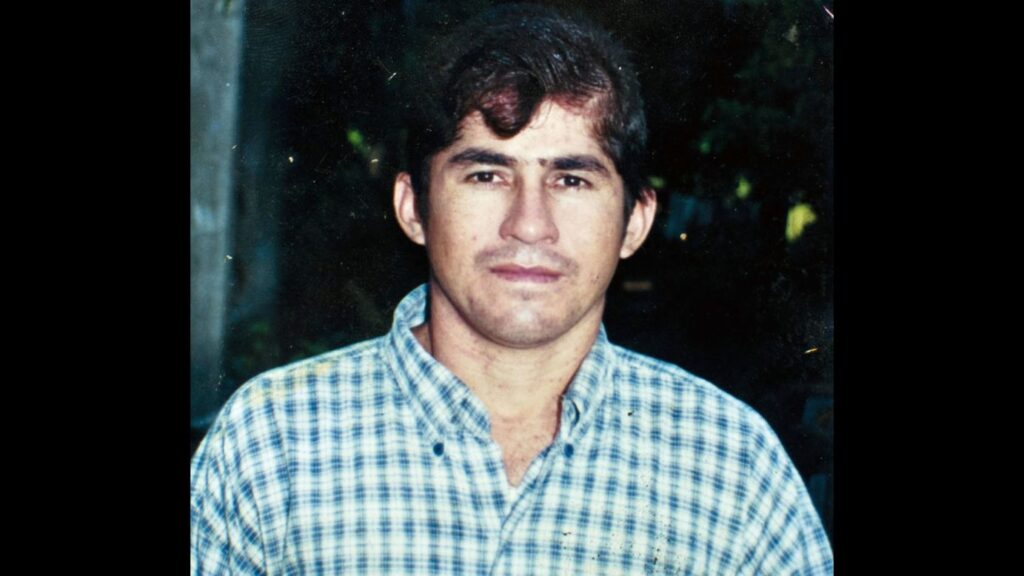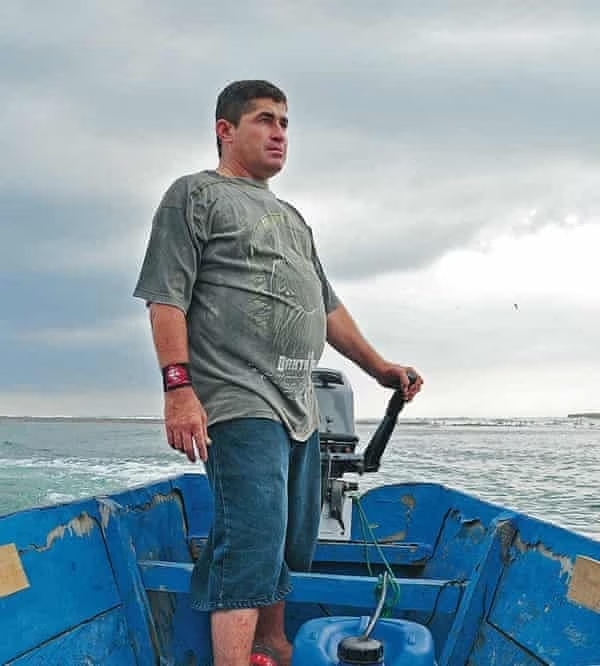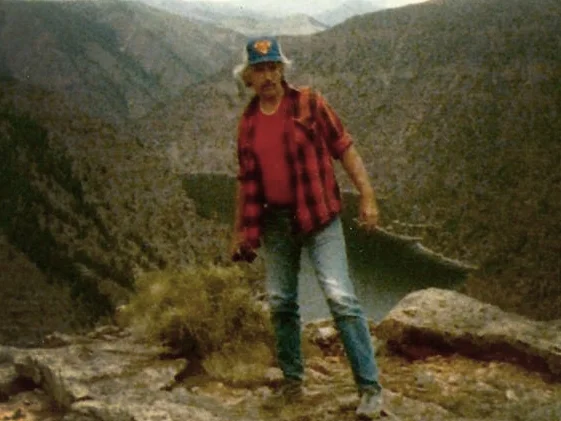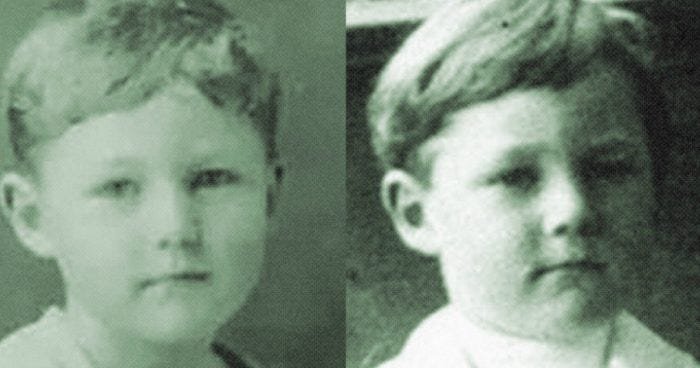This shark hunting expedition was like any other job for 36-year-old professional fisherman José Salvador Alvarenga.
As he left the coast of Mexico with another crewmate for what was supposed to be a smooth fishing trip, he had no idea he wouldn’t see the shoreline again for 438 days.
An unexpected storm swept the 25-foot fishing boat up and set it back down in the middle of the ocean, far from its intended path.


With a broken engine, no food or water on board and low-battery radios, the pair would fight to survive each day, resorting to eating raw sea turtles and drinking their own urine.
It was a treacherous journey across the vast ocean, with storms destroying the boat slowly as both men began to lose their minds. By the time the shoreline of a small island was spotted in the distance, only one man remained.
Not many can say that they have survived 14 months at sea. Yet, over a year after setting sail from Mexico, Alvarenga miraculously washed up on the shore of an island 6,700 miles away, starving but alive.
Setting Sail
On November 17th, 2012, 36-year-old José Salvador Alvarenga was hired to complete a shark fishing expedition that would last approximately 30 hours. He would be taking a small 25-foot-long fishing boat made of fibreglass off the coast of Chiapas, Mexico.
This kind of deep-sea fishing trip is not for the faint of heart. However, Alvarenga had been fishing since he was a child and had years of professional experience.
Unfortunately, his crewmate on this trip, 23-year-old Ezequiel Córdoba, was new to the industry and an inexperienced sailor.
The weather for the duration of the fishing excursion was supposed to be clear and the water was supposed to be calm. For this reason, the men packed light.
They didn’t think about having extra food or water on board and left the coast with their radio batteries only half-charged.
As they sailed into beautiful weather, hopeful for a good catch, neither fisherman had any idea that there was an unexpected storm up ahead.
The first half of their trip was a success as they had pulled in a large catch, meaning they were going to be able to cash in once they returned. However, during the second half of the trip, the sky grew grey and dark clouds began to form.
There was a massive unexpected storm heading right towards the fishing boat and there was no way to escape it. The crashing waves beat at the sides of the boat, pulling it far from its intended path and pushing it out into the middle of the ocean.
The storm lasted five days and once it cleared, the boat was now thousands of miles from home with a broken motor. They were lost at sea.
A Sinking Ship And A Game of Survival
Nearly all of the electronics were damaged in the storm. Alvarenga was able to make one final quick call to his boss before the batteries in the radios died, but they couldn’t even determine the location where they should search for the lost men.
His boss would send out a search team to try and find the missing fishing boat, but they would give up after only two days.

As the men tried to steer the boat, it began to take on water and they realized that they would have to unload the large catch of fish they had caught, otherwise they would risk sinking.
They began to throw any large, heavy items not necessary for survival overboard and they tied 50 buoys together at the back of the boat. Several massive storms battered their watercraft as they protected themselves by using large iceboxes as shelter.
One of their biggest problems though, was the lack of food and clean drinking water. Since Alverenga had fished since he was a child, he knew how to catch fish with his bare hands.
It wasn’t an easy or quick process, but he was able to catch a few for the men to eat. At other times, they were able to pull sea turtles into the boat to eat.
It was more difficult to find clean drinking water. They had set up buckets to collect rainwater, but when it had not rained for a few days Alvarenga resorted to drinking his own urine. Any rainwater that they were able to collect was strictly rationed.
As they floated into the abyss of the ocean, they found many discarded plastic bottles – a result of pollution, but useful for collecting rainwater in this situation.
At one point, a plastic garbage bag containing a slew of valuable items floated by. Inside was some old chewing gum, rotten milk and scraps of raw vegetables. For these starving men, it was a treasure trove; a delicious buffet for two.
Alvarenga and his crewmate Córdoba became really close as they worked together to stay alive. They had no one else to turn to other than each other, so they would often get into deep conversations about their families and biggest regrets in life.
Alvarenga spoke about his strained relationship with his parents and his daughter, whom they had custody of.
The men promised each other that in the event that one of them died, the other would visit their family and tell them the story of what had happened. They vowed not to eat each other, under any circumstance.
Alone At Sea
Sadly, Córdoba would become deathly ill after eating the raw meat of a seabird. He stopped eating and drinking water and would pass away due to starvation approximately four months into their voyage.
Initially, Alvarenga refused to believe that he was now completely alone. He kept his crewmate’s body on the ship for six days after his death and continued to talk to him as if he were alive.
When he realized he was beginning to lose his mind, Alvarenga decided to give him a proper burial by sea and pushed his body overboard.
From that point onward, Alvarenga’s mental clarity quickly began to deteriorate. As he continued to survive on raw sea turtles, jellyfish and rainwater, his mind drifted into a different reality.
He began hallucinating, with visions so real that he could smell and taste them.
Then, one day as he sat wondering how much longer he could keep going, he saw something in the distance that caught his attention. It looked like the outline of an island, but he wasn’t sure if it was real or just another illusion.
As he stared longer, he realized that it was a real island and he needed to get his boat over to it. He cut the buoys off the back and as the boat drifted closer, he jumped off the side and swam to the beach where he was found by two locals.
Alvarenga’s fishing boat had been lost at sea for 438 days and had drifted over 6,700 miles away from the coast it departed.
A Most Unwelcome Return
After spending more than a year in a dire situation lost at sea, José Salvador Alvarenga was now safe. He had no idea how long he had been missing or where he was.
He was found emaciated, with matted hair and swollen ankles. He could hardly walk or talk, but he was alive. However, his troubles were not over yet.

As the media caught wind of his unbelievable survival story and his photo hit the front page of every paper, there were many who doubted his claims.
It was difficult to imagine anyone being able to live through that many days lost at sea, surviving on sea creatures and rainwater alone. Still, there was overwhelming proof that the story was true and Alvarenga passed a lie detector test.
In 2015, Alvarenga gave his survival story to a journalist, who turned it into a book called, 38 Days: An Extraordinary True Story of Survival at Sea.
In the first year, it would only sell around 1,500 copies in the U.S., however, shortly after its release, Ezequiel Córdoba’s family tried to sue him for $1,000,000, claiming he consumed his crewmate.
Alvarenga has refuted this accusation, claiming the pair made a pact that neither would eat the other after death. He felt the family only attempted to sue him because they believed the book deal made him rich.
The lawsuit fell through and Alvarenga tried to move on with his life
José Salvador Alvarenga’s name was forgotten by the media within just a few weeks of being found, as his incredible story of survival at sea was replaced by other pressing headlines.
Sources:
https://www.cnn.com/2016/01/08/world/rewind-real-life-castaway/index.html
https://www.theguardian.com/world/2015/nov/07/fisherman-lost-at-sea-436-days-book-extract













asda